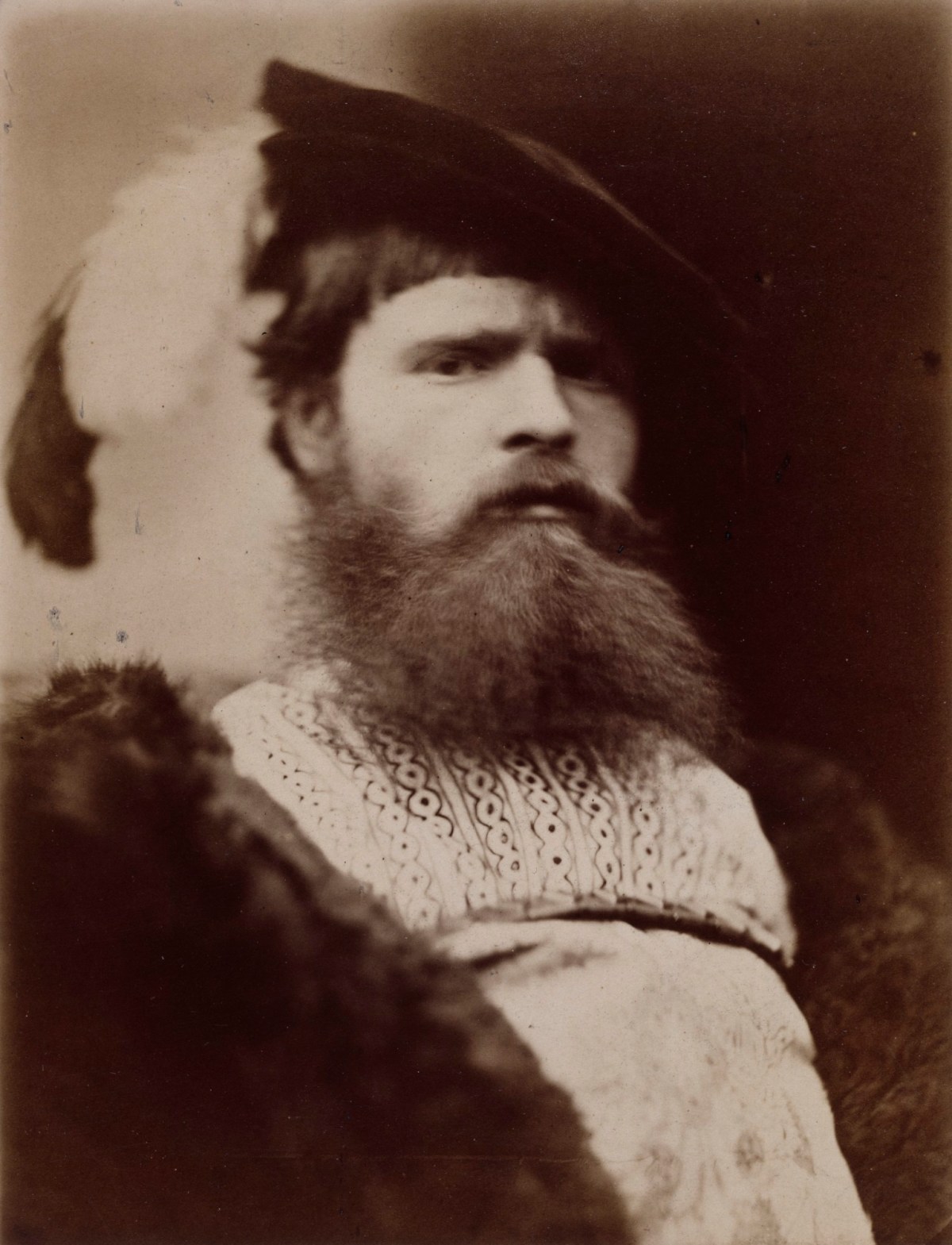More about William Frederick Yeames
Works by William Frederick Yeames

Sr. Contributor
William Frederick Yeames was a man of contradictions – both rebelling against the conventions set by the Royal Academy and being a member of the institution.
Yeames was a British history painter, known for his melodramatic renditions of historical events, especially of the Tudor and Stuart periods. His paintings were the archetype of Victorian sentimentality, often including children to evoke an emotion response rather than conveying a clear narrative.
Yeames was born in Taganrog, located in southwest Russia, where his father was a British consulate. He was homeschooled until his father’s death in 1842, when he relocated to Dresden and began to study painting. In 1848, he relocated once again to London to study painting and anatomy under Sir George Scharf and later drawing under sculptor J. Sherwood Westmacott. Then he went to Italy, first studying in Florence with fellow artists Pollastrini and Raphael Buonajuto, and later independently in Rome.
Although his training did not follow the traditional Royal Academy canon, he was able to infiltrate London artistic circles because of his studies abroad in Italy. His marriage also helped his career, as his wife was the sister of early photographer and painter David Wilkie Wynfield and niece of painter David Wilkie who was the Principle Painter in Ordinary to King William IV and Queen Victoria.
Yeames was also just like a classic protagonist in an indie film, founding his own group of rebel artists, the St. John’s Wood Clique. Since he and his peers did not follow the strict conventions set by the Royal Academy, they often had trouble getting their work into prestigious galleries. Unlike traditional history paintings which traditionally took on grave subjects from biblical or Classical origin, his paintings were characterized by their historical costumes and settings which intended to capture the mood of the past, rather than a specific event, and drew from precedents set by previous British painters like Thomas Gainsborough. His work evolved into a genre known as "problem pictures," which depict unresolved dilemmas with multiple explanations.
Yeames’ strength was his compositions, his groupings giving his paintings their dramatic effect, rather than through color or size. However, his simple compositions, which conveyed the narrative in a succinct manner, did not lack complexity. He was able to capture emotion through reactions and facial expressions to create intrigue without clutter.
Although he was a bit of a rebel, going against the Royal Academy grain, he was also able to make his way into the institution. He was a popular teacher at the Royal Academy, and elected an associate of the Royal Academy in 1866 and Royal Academician in 1878. He also held several official posts including librarian of the Royal Academy, curator of the painted hall at the Royal Naval Hospital in Greenwich, and examiner for the South Kensington Design Schools.
Most of Yeames’ paintings did not have lasting impact, and his legacy rests almost entirely on one painting, When Did You Last See Your Father? located in the Walker Art Gallery in Liverpool. It has had a lasting impact on the collective consciousness of the British, and has been quoted in later works of art.
Sources
- “And When Did You Last See Your Father?” Walker Art Gallery, National Museums Liverpool. Accessed 22 September, 2019. https://www.liverpoolmuseums.org.uk/walker/collections/paintings/19c/it….
- Bown, Nicola, Victoria Mills, and Alison Smith. “Focus: Victorian Sentimentality.” Tate. Accessed 22 September, 2019. https://www.tate.org.uk/whats-on/tate-britain/display/focus-victorian-s….
- Cruise, Collin. “Yeames, William Frederick.” Oxford Dictionary of National Biography. 23 September 2004. https://www.oxforddnb.com/view/10.1093/ref:odnb/9780198614128.001.0001/….
- Fowl, Frances. “Amy Robsart.” Tate. December 2000. https://www.tate.org.uk/art/artworks/yeames-amy-robsart-n01609.
- “William Frederick Yeames.” Art UK. Accessed 22 September, 2019. https://artuk.org/discover/artists/yeames-william-frederick-18351918

Contributor
To be entirely honest, sometimes art makes me feel dumb.
I'll look at something like James Rosenquist’s Vestigial Appendage and just have absolutely no idea what is going on. Am I supposed to be inspired, aroused, both, neither? It's never clear. This is why William Frederick Yeames is such a breath of fresh air, as the man’s work is art that is both easy to understand and just generally fun to look at.
Like many artists, William looked to history to inspire his work. However, where other artists tried to either glorify their subjects, or at least make them look real, William went straight for the melodrama. Many of them were not meant to capture real events, but to capture the emotional situation presented by a particular period in history, kind of like how many popular bio-flix today are “based” on true stories but aren't rigidly factual. Also like these modern interpretive films, Yeames spared no expense in properly reconstructing his historic aesthetic. He and his art club, called the St John's Wood Clique, would rent out castles over the summer that they would use to stage their paintings.
Again, he was primarily known for these historical pieces, but personally I think his other works are way cooler. See, Yeames specialized in a narrative style that made his work easy to understand, and easy to enjoy. Think Norman Rockwell. Where Yeames differs from Rockwell, though, is in the matter of intrigue. Yeames had a talent for what is called the “problem picture” a narrative painting where some piece of key information is left out. This makes some of his work toxically intriguing.
Unfortunately, creating easy to consume art does not draw the attention of critics and so, regardless of the fact that he was a talented and well trained member of the Royal Academy, many of his pieces are not but a footnote in art history. Luckily they are not yet entirely forgotten and there is still more than enough of his straightforward work around to find and appreciate.
Sources
- Chilvers, Iam “The Oxford Dictionary of Art” Oxford University Press 2004 pg 772 https://books.google.com/books?hl=en&lr=&id=WYaRX58a0_IC&oi=fnd&pg=PR11…
- Fletcher, Pamela M. “Narrating Modernity: The British Problem Picture, 1895-1914: The British Problem Picture” 2003 https://books.google.com/books?id=1MVKDwAAQBAJ&pg=PT6&lpg=PT6&dq=the+pr…
- Fowle, Frances “William Frederick Yeames : Amy Robsart” Tate December 2000 https://www.tate.org.uk/about-us
- Hoakley “And When Did You Last See William Frederick Yeames?” The Electric Light Company 05/03/2015 https://eclecticlight.co/2018/05/03/and-when-did-you-last-see-william-f…
Featured Content
Here is what Wikipedia says about William Frederick Yeames
William Frederick Yeames RA (/jiːmz/; 18 December 1835 – 3 May 1918) was a British painter best known for his oil-on-canvas "And When Did You Last See Your Father?", which depicts the son of a Royalist being questioned by Parliamentarians during the English Civil War.
Check out the full Wikipedia article about William Frederick Yeames











